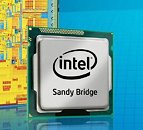
48-Core Russian Baikal-S Processor Die Shots Appear
In December of 2021, we covered the appearance of Russia's home-grown Baikal-S processor, which has 48 cores based on Arm Cortex-A75 cores. Today, thanks to the famous chip photographer Fritzchens Fritz, we have the first die shows that show us exactly how Baikal-S SoC is structured internally and what it is made up of. Manufactured on TSMC's 16 nm process, the Baikal-S BE-S1000 design features 48 Arm Cortex-A75 cores running at a 2.0 GHz base and a 2.5 GHz boost frequency. With a TDP of 120 Watts, the design seems efficient, and the Russian company promises performance comparable to Intel Skylake Xeons or Zen1-based AMD EPYC processors. It also uses a home-grown RISC-V core for management and controlling secure boot sequences.
Below, you can see the die shots taken by Fritzchens Fritz and annotated details by Twitter user Locuza that marked the entire SoC. Besides the core clusters, we see that a slum of cache connects everything, with six 72-bit DDR4-3200 PHYs and memory controllers surrounding everything. This model features a pretty good selection of I/O for a server CPU, as there are five PCIe 4.0 x16 (4x4) interfaces, with three supporting CCIX 1.0. You can check out more pictures below and see the annotations for yourself.
Below, you can see the die shots taken by Fritzchens Fritz and annotated details by Twitter user Locuza that marked the entire SoC. Besides the core clusters, we see that a slum of cache connects everything, with six 72-bit DDR4-3200 PHYs and memory controllers surrounding everything. This model features a pretty good selection of I/O for a server CPU, as there are five PCIe 4.0 x16 (4x4) interfaces, with three supporting CCIX 1.0. You can check out more pictures below and see the annotations for yourself.










